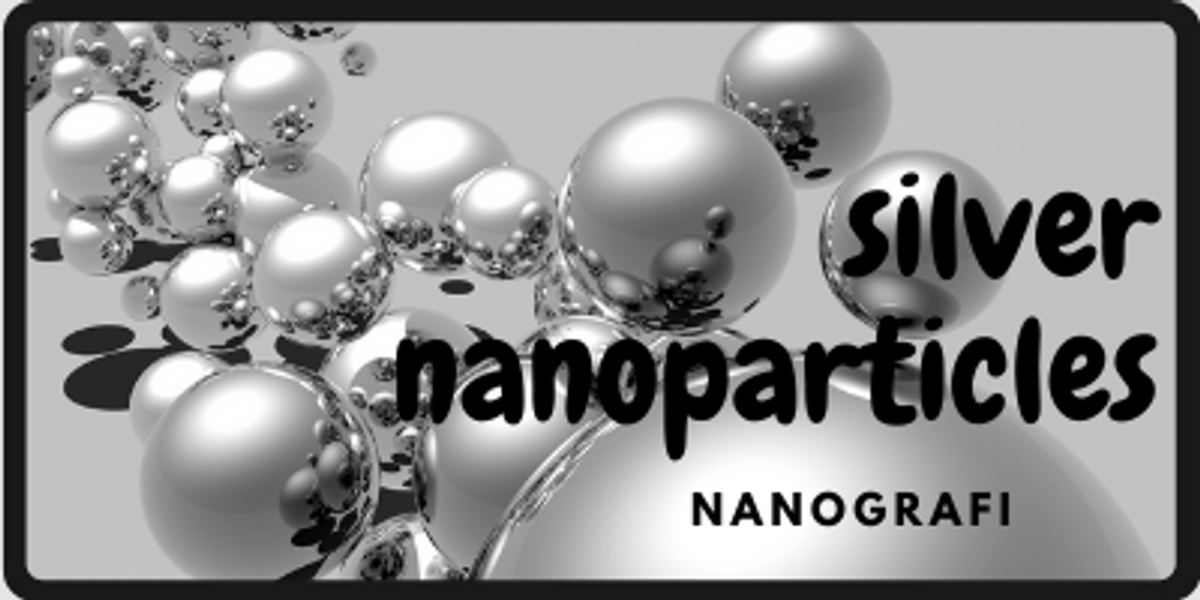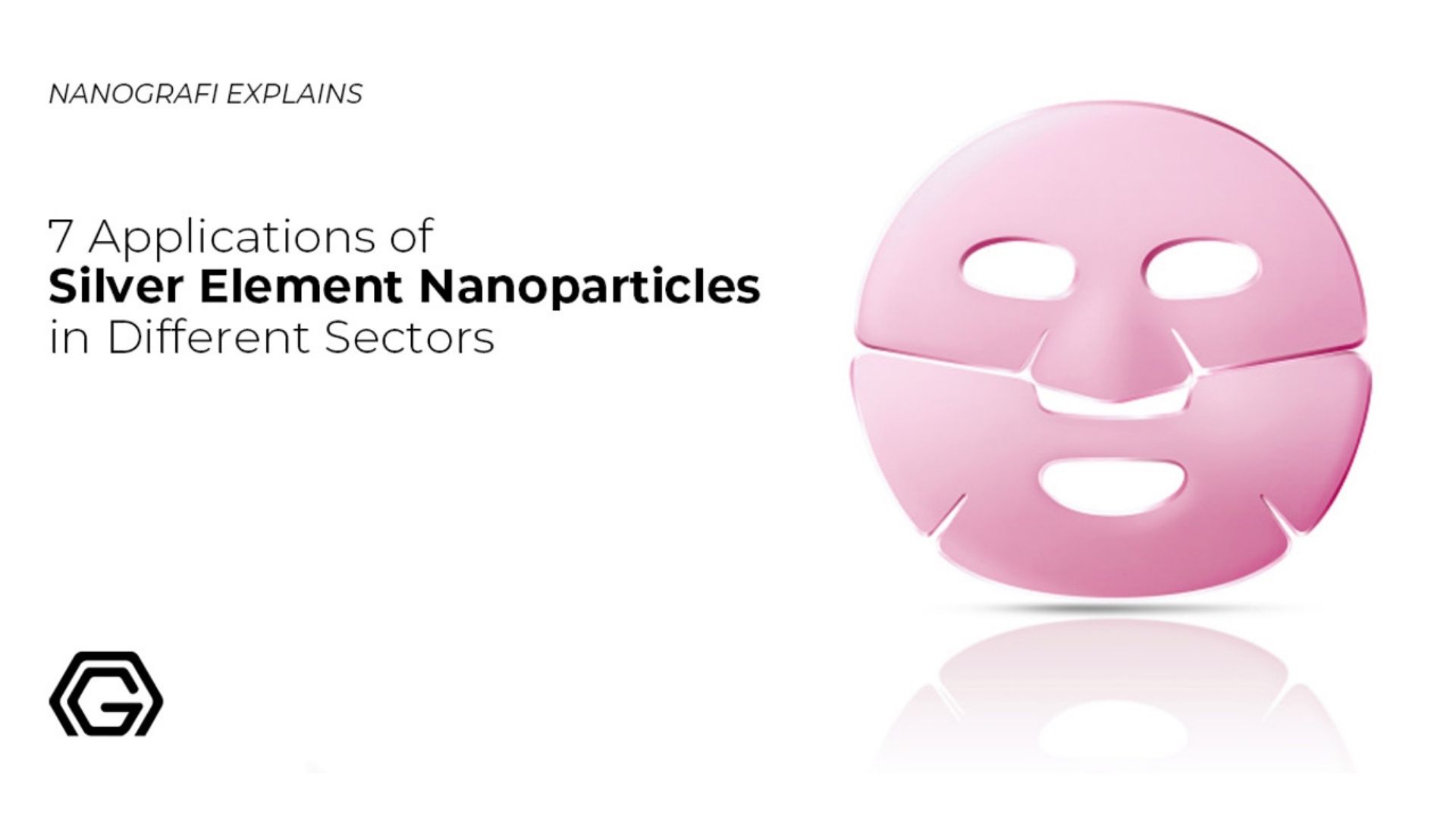Explained: Silver Nanoparticles
Silver nanoparticles are promising metallic nanoparticles with excellent thermal and electrical conductivity, anti-bacterial properties, catalytic activity, and optical properties.
Silver nanoparticles of different shapes and sizes are synthesized through chemical, physical, and green methods. Obtained nanoparticles are generally utilized in the medical industry, catalytic applications, sensors, and special displays. Silver nanoparticles have been an important component of various different applications for a very long time.
Introduction
Nanosized silver structures offer interesting physical and bio-chemical properties compared to their micro and macro alternatives. Silver is a well-known element with high thermal and electrical conductivity. When it is reduced to the nano sizes silver acquires significant chemical stability, antimicrobial properties, enhanced electrical and thermal conductivity, and optical qualities. These interesting properties are strongly dependant on the size and shape of silver nanoparticles, as well as their chemical environment.
Properties of Silver Nanoparticles
There are different possible forms of silver nanoparticles that have been reported in the literature. The main shapes of silver nanoparticles are; nanocubes, nanorods, nanowires, nanobars, nanoprisms, nano-flowers, and nano-spheres (1). Different shapes and sizes of silver nanoparticles can be obtained through different synthesis methods and different synthesis conditions. In addition to shape and size; the surface charge, agglomeration, and dissolution rate are also important parameters for silver nanoparticles. These properties are particularly significant in terms of biological interactions and impacts. The optical properties of silver nanoparticles are also worth attention. Their optical properties mainly depend on their localized surface plasmon resonance (LSPR) resulting from their unique interaction with light. LSPR of silver nanoparticles depends on the size, shape, dielectric environment, and mutual electromagnetic interactions among particles in close proximity. Through the manipulation of these properties, it is possible to obtain strong visible and near-infrared (NIR) scattering and absorption in the range of 393–738 nm and 500–1000 nm (2).
One critical issue with silver nanoparticles is their possible toxic effect on the human body and environment. The toxicity of silver nanoparticles depends on their reactivity and the release of silver ions. The important factors in terms of toxicity are exposure time, dose, temperature, particle size, shape, surface coatings, and cell type. In general, the smaller the size of silver nanoparticles, the stronger cytotoxic effects they could have. Nanoparticles can induce reactive oxygen species (ROS) production directly once they are exposed to the acidic environment of lysosomes. In order to minimize the toxicity of silver nanoparticles, chemical surface modification with biological ligands can be applied (2).
Synthesis Methods for Silver Nanoparticles
The two approaches to the synthesis of metallic nanoparticles are the top-down and bottom-up approaches. These techniques can be realized through physical, chemical, or biological methods.
Physical and Chemical Methods
The most common physical methods are evaporation-condensation and laser ablation. The advantages of physical methods over chemical methods are the absence of contagion and homogenous nanoparticles. The evaporation-condensation method traditionally uses a tube furnace at atmospheric pressure to evaporate the source material. Evaporated silver particles are then condensed with control to obtain the required shape and size. However, using a tube furnace has some disadvantages such as high energy consumption, large space requirements, and a long amount of time to reach thermal stability. Instead of using a tube furnace, a ceramic heater with a local heater area is found to be a better option. Laser ablation of metallic bulk materials in solution is another physical approach to nanoparticle synthesis. In this method, the characteristics of the silver nanoparticles and ablation efficiency depend on parameters such as the wavelength of the laser impinging the metallic target, the duration of the laser pulses, the laser fluency, the ablation time duration, and the effective liquid medium, with or without the presence of surfactants (3). Through this technique, silver nanoparticles are formed in a colloidal form. Due to the absence of chemical reagents, a pure colloid product can be obtained through the laser ablation technique.
Chemical methods for silver nanoparticle synthesis include; chemical reduction, microemulsion, and microwave-assisted methods. The chemical reduction method is the most traditional chemical synthesis method for silver nanoparticles. Organic or inorganic reducing agents such as borohydride, citrate, ascorbate, and elemental hydrogen is used in order to obtain colloidal dispersions of silver nanoparticles. In the microemulsion technique, the metal precursor and the reducing agent are separated in immiscible phases. The interaction between the silver precursor and reducing agents is only observed at the interface between two liquids. This method allows the preparation of uniform and size controllable nanoparticles. However, the need for large amounts of organic solvent and the post-separation of this solvent from silver nanoparticles make the microemulsion method relatively expensive. In the microwave-assisted method, the reduction of silver nanoparticles is provided through microwave radiation. The technique gives up a relatively rapid reaction and gives a higher concentration of silver nanoparticles with the same temperature and exposure.
To learn more about applications of silver nanoparticles,
you can read our blog post here.
Green Synthesis of Silver Nanoparticles
Even though chemical and physical methods provide pure silver nanoparticles, they require a lot of energy consumption. Physical methods provide lower quantities while chemical methods use hazardous material. For this reason, the green synthesis of silver nanoparticles has gained importance over the years. The green synthesis is an easy, profitable, reliable, and eco-friendly approach. The three main steps of the green synthesis approach are the selection of solvent medium, selection of an environmentally benign reducing agent, and selection of non-toxic substances for the silver nanoparticles' stability. Microorganisms such as bacteria, fungi (yeast), and plant extracts are the frequently used environmentally benign materials in green synthesis. Using microorganisms for the synthesis of silver nanoparticles provides durability in harsh conditions and rapid production. On the other hand, the plant extraction method provides locally available nanoparticles, is eco-friendly, cheap, and gives the highest yield of nanoparticles and have a broad variety of metabolites that can aid in the reduction of silver ions, and are quicker than microbes in the synthesis (4).
What are the Application Areas of Silver Nanoparticles?
The application areas of silver nanoparticles include sensors, catalysis, electroluminescent materials, anti-bacterial agents in the health industry, food storage, textile coatings, and a number of environmental applications. Silver nanoparticles are particularly well-known for their anti-bacterial properties. The chemical stability and catalytic effect of silver nanoparticles have an advantage over the other metallic nanoparticles for antibacterial, antiviral, anticancer, antifungal, and anti-inflammatory activities. Silver nanoparticles break through the cell membrane of bacteria and viruses and disrupt the protein synthesis mechanism effectively. This unique property of silver nanoparticles is used against several different diseases such as Avian influenza, HIV/AIDS, Middle East respiratory syndrome (MERS), Ebola virus, Zika virus, etc (4). The anti-bacterial properties of silver nanoparticles are also used for the disinfection of metal devices and home appliances, water treatment, and anti-bacterial textiles. In medicine, silver nanoparticles are also used as ointments to prevent infection against burn and open wounds. Furthermore, Silver nanoparticles are utilized in the food industry for the packaging to stop the damage of food products by pathogens.
Silver nanoparticles show catalytic activity in contrast to bulk silver materials. This catalytic activity, chemical stability, and increased active surface area of silver nanoparticles are extremely important in catalytic applications. The catalytic properties of silver nanoparticles are utilized in various different reaction mechanisms such as reduction of 4-nitrophenol with NaBH4 in alkaline aqueous solutions, oxidation reactions, and chemical bleaching reactions.
The strong electrochemical properties of silver nanoparticles are utilized in nanoscale sensors. Incorporation of silver nanoparticles offers faster response times and lower detection limits. Silver nanoparticles have shown high sensitivity when utilized in hydrogen peroxide sensing electrodes. The optical properties of silver nanoparticles such as localized surface Plasmon resonance and fluorescent emissions are also utilized in different applications. A promising optical data storage system is developed based on the surface plasmon resonance of silver nanoparticles. Furthermore, LSPR of silver nanoparticles is utilized in biodiagnostic and imaging and therapeutic applications. The fluorescent emission properties of silver nanoparticles are utilized in biological labels and electroluminescent displays.
Conclusion
Silver nanoparticles have been at the center of studies for a considerable amount of time. Nanosized silver particles show enhanced and superior properties compared to their micro and macro counterparts. The important properties of silver nanoparticles are their high electrical and thermal conductivity, anti-bacterial and anti-viral properties, optical properties such as LSPR and fluorescent luminescence, and catalytic activity. The shape and size of silver nanoparticles have significant impacts on these properties. Thus, through controlling the size and shape of silver nanoparticles it is possible to manipulate their properties. The shape and size of silver nanoparticles are controlled by changing the synthesis method and synthesis parameters. Different synthesis methods are developed by scientists in order to be able to control the morphology of silver nanoparticles as well as to obtain the most cost and energy-efficient, simple, and environmentally friendly technique. These methods are grouped as physical, chemical, and green synthesis methods. Silver nanoparticles of different shapes and sizes are utilized against diseases, for the cleaning of medical equipment and home appliances, in ointments for wound healing, food storage, and textile coatings due to their anti-bacterial properties. The optical properties of silver nanoparticles are utilized in biodiagnostic, bio labeling, therapeutic applications, and electroluminescent displays. The catalytic activity of silver nanoparticles is used for organic reactions while the electrochemical properties of silver nanoparticles are utilized in sensing applications. All in all, silver nanoparticles are a promising member of metallic nanoparticles and still offer promising improvements.
To discover the latest news from nanotechnology, you can visit Blografi.
References
1.Khodashenas, B., & Ghorbani, H. R. (2019). Synthesis of silver nanoparticles with different shapes. Arabian Journal of Chemistry, 12(8), 1823-1838.
2.Wei, L., Lu, J., Xu, H., Patel, A., Chen, Z. S., & Chen, G. (2015). Silver nanoparticles: synthesis, properties, and therapeutic applications. Drug discovery today, 20(5), 595-601.
3.El-Nour, K. M. A., Eftaiha, A. A., Al-Warthan, A., & Ammar, R. A. (2010). Synthesis and applications of silver nanoparticles. Arabian journal of chemistry, 3(3), 135-140.
4.Beyene, H. D., Werkneh, A. A., Bezabh, H. K., & Ambaye, T. G. (2017). Synthesis paradigm and applications of silver nanoparticles (AgNPs), a review. Sustainable materials and technologies, 13, 18-23.
Recent Posts
-
Cellulose Nanocrystals (CNC) in Food Industry
Cellulose nanocrystals (CNC) are emerging as a pivotal material in the realm of food technology, her …3rd May 2024 -
Reducing the Carbon Footprint of Nanomaterials
The production of nanomaterials is vital for numerous advanced applications, from healthcare to elec …26th Apr 2024 -
Nanocomposites in Food Packaging
The utilization of nanocomposites in food packaging represents a significant advancement in the fiel …19th Apr 2024






